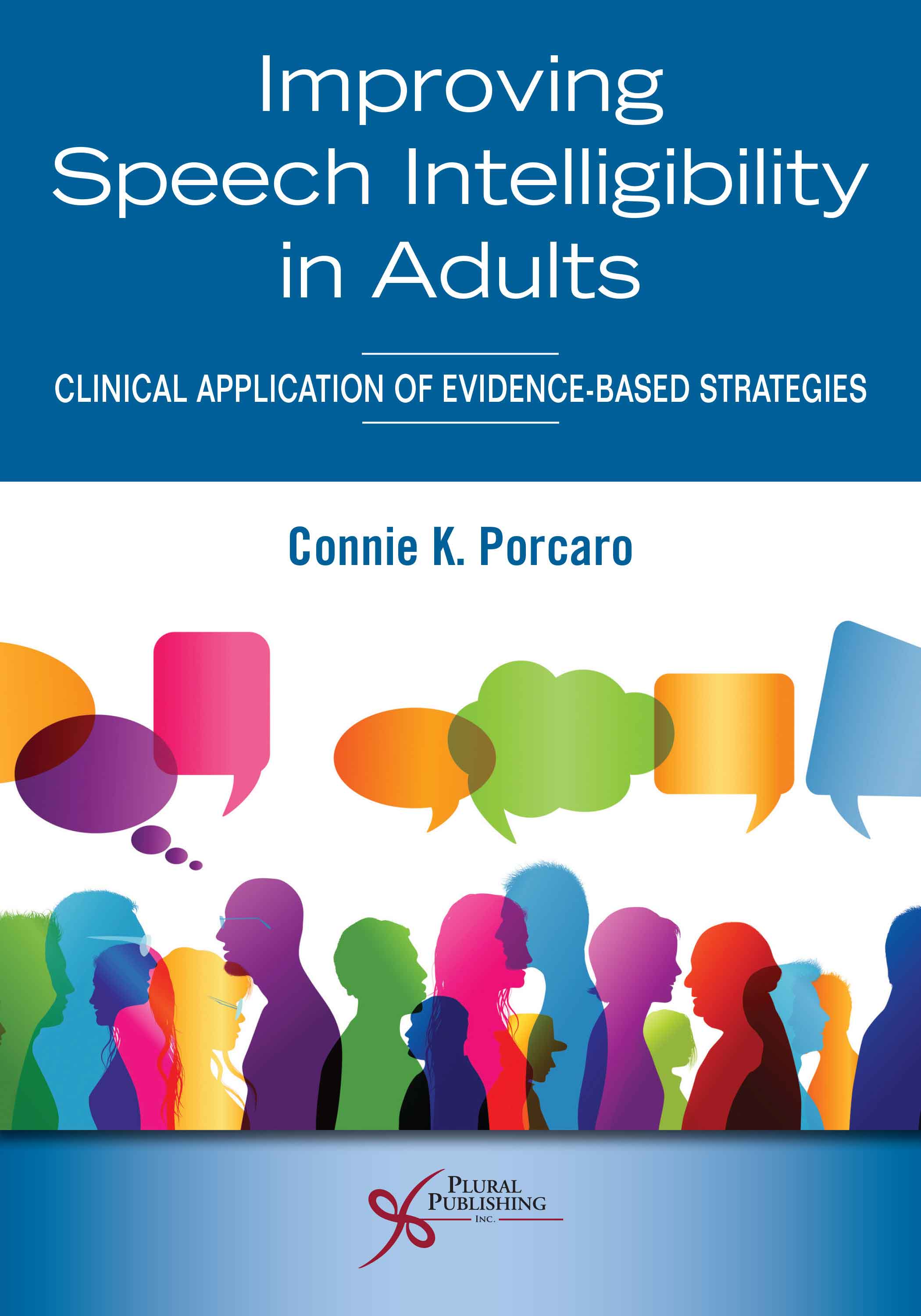
Improving Speech Intelligibility in Adults: Clinical Application of Evidence-Based Strategies
First Edition
Connie K. Porcaro
Details: 273 pages, B&W, Softcover, 7" x 10"
ISBN13: 978-1-63550-357-9
© 2023 | Available
For Instructors
Purchase
Being intelligible to a listener means getting your message across and improving speech intelligibility is one of the most common goals for clients working with a speech-language pathologist (SLP). Improving Speech Intelligibility in Adults: Clinical Application of Evidence-Based Strategies is a professional resource for practicing SLPs working with adults with communication disorders, such as dysarthria, acquired apraxia of speech, and voice disorders.
This book incorporates current research findings to support the use of evidence-based strategies in clinical situations. While other books may focus on “drilling” and “practicing” a list of words, sentences, and topics to use with a client to change their behaviors, Improving Speech Intelligibility in Adults uniquely focuses on the speaker and the listener in tandem. The author takes a noteworthy approach in how the listener can change behaviors to assist with understanding. The text presents a comprehensive approach to improving speech intelligibility by including ways to enhance the communication environment during in-person or teletherapy exchanges to enhance understanding between speaker and listener.
Reviews
“This book … offers a unique perspective not seen in most books on speech sound treatments, suggesting that a communicative partner approach be applied when it can aid in functional communication between speakers and listeners.
… the goal of the book is to equip readers with an ability to bridge the gap between aspects that influence intelligibility according to available research with what works well clinically.
The target audience includes practicing speech language pathologists (SLPs) and those studying speech-language pathology. The book is a professional resource that can be used alongside diagnostic and therapeutic services for adults with acquired communication disorders such as dysarthria, acquired apraxia of speech, and voice disorders.
The book includes a brief summary of each chapter in the preface, which immediately aids in navigating the text. Each chapter also contains a more comprehensive summary reviewing the information as well as at least one case study and a list of references…
This book serves as a guide for expanding SLPs' thinking in areas such as working with communicative partners to make changes in the environment, thus enabling increased functional communication. It succinctly states, "being understood is everything to our clients." The book effectively guides clinicians to use internal evidence (data and observations collected on individual clients) when determining treatment plans for reduced intelligibility. Therefore, its emphasis on using one of the three main areas of evidence-based practice (EBP) in speech-language pathology is valuable to clinicians servicing patients with reduced intelligibility.”
–Melissa Raymond, MS, Biola University, from Doody’s Reviews (July 2023)
Preface
Acknowledgements
Chapter 1. Introduction of Intelligibility and Related Concepts
Key Points
Definitions of Intelligibility,
Comprehensibility, and Related Measures
Intelligibility
Comprehensibility
Efficiency
Naturalness
Communication Participation
Components of a Communication Exchange
Theories of Communication Feedback
Communication Channels
Communication Noise
Physical Noise
Physiological Noise
Psychological Noise
Semantic Noise
Shared Experiences Between Communicators
Impaired Communication
Consideration of Function and Disability
Related to Intelligibility
Integrating Science and Clinical Practice to Improve Intelligibility
Using Evidence-Based Practice for Clinical Decisions
Exploring Our Role in Bridging Research to Clinical Practice
Utilizing Technology Appropriately for Best Practice
Summary
Case Study Introduction
References Appendix 1–1. References for ICF
Application to Specific Disorders Related to Reduced Intelligibility
Chapter 2. Impact of Speaker-related Factors on Intelligibility
Key Points
Speech Subsystems and Effect on Intelligibility
Intelligibility Issues Related to Speakers With Dysarthria
Respiration
Phonation
Resonance
Articulation
Prosody/Rate
Intelligibility Issues Related to Speakers With Acquired Apraxia of Speech
Respiration, Phonation, and Resonance
Articulation and Fluency
Prosody and Rate
Intelligibility Issues Related to Speakers With Voice Disorders
Voice Disorders Related to Neurologic Etiology
Voice Disorders Related to Functional Etiology
Voice Disorders Related to Organic Etiology
Voice Disorders Related to Head and Neck Cancer
Influence of Head and Neck Cancer Treatment on Voice
Electrolaryngeal Speech
Esophageal Speech
Tracheoesophageal Speech
Effect of Face Masks and Social Distancing on Intelligibility
Summary
Dysarthria Case
Voice Disorders Case
References
Chapter 3. Assessment of Speaker Structures and Functions: Subsystem Evaluation to Determine Contributions to Reduced Intelligibility
Key Points
Case History Questions
Standardized Tests and Rating Scales for Speech and Voice Assessment
Patient Reported Outcome Measures
Published Dysarthria Measures
Published Adult Apraxia of Speech Measures
Published Voice Disorders Measures
Factors Related to Collecting Recorded Samples
Options for Recording Virtually
Considerations of Recording With Face Masks
Auditory-Perceptual Evaluation
Evaluation of Respiration
Posture and Body Movement
Observation
Duration Measures
Breath Group Measures
Conversational and Reading Measures Related to Respiration
Evaluation of Phonation
Measures of Loudness
Measures of Pitch
Measures of Quality
Evaluation of Resonance
Evaluation of Articulation
Speech-like Movements and Rates
Speech Sound Inventory
Connected Speech Sample
Evaluation of Prosody
Summary
Dysarthria Case
Voice Disorder Case
References
Appendix 3–1. Communicative
Effectiveness Survey—Revised (CESR)Appendix 3–2.
The Communication 92 Participation Item Bank—General Short Form
Chapter 4. Factors Related to Meaningful Assessment of Intelligibility
Key Points
Clinician’s Use and Perceptions of Intelligibility Measures
Intelligibility Assessment
Subjective Intelligibility Measurement Tasks
Objective Intelligibility Measurement Tasks
Influences on Intelligibility Measures
Factors Related to the Speaker
Severity
Speech Rate
Personal Speaker Factors
Factors Related to the Message
Type of Message
Predictability of Message
Presentation Mode of Message
Factors Related to Listeners
Individual Listener Variability
Listener Task
Experience
Familiarity with Speaker
Familiarity with Message Age
Factors Related to the Communicative Environment
Recording Equipment
Auditory-Only versus Auditory-Visual
Presentation Mode Listening Conditions
Assessment of Comprehensibility, Efficiency, and Naturalness
Intelligibility Measures Related to Voice Disorders and Head and Neck Cancer
Use of Technology in Intelligibility Assessment
Summary
Dysarthria Case
Voice Disorders Case
References Appendix 4–1.
Medical Research Council Institute of Hearing Research Audio-Visual Adaptive Sentence Lists
Appendix 4–2. Hearing in Noise Test Sentence Lists
Appendix 4–3. Checklist for Considerations Related to Assessment of Intelligibility
Chapter 5. Speaker Subsystem Management Strategies to Improve Intelligibility
Key Points
Guiding Frameworks for Management Decisions
International Classification of Function
Evidence-Based Practice
Subsystem Contribution and Management
Respiration
Diaphragmatic-Abdominal Breathing
Increasing Upper Body Tone
Body Positioning
Controlling Exhalation
Generating Appropriate Loudness Levels
Muscle Strength Training
Using Optimal Breath Groups Inspiratory Checking
Phonation
Using Effortful Closure
Timing Phonation with Exhalation
Low Impact Voicing
Utilizing Relaxation Techniques
Speaking with High Phonatory Effort
Phonation Resistance Training Exercises (PhoRTE)
Using Holistic Voice Therapy Programs
Implementing Vocal Hygiene Enhancing Loudness with Prosthetics
Resonance
Articulation
Modifying Habitual Speech: Clear and Loud Speech
Deciding on Use of Nonspeech Oral Motor Exercises (NSOME)
Prosody
Modifying Speech Rate
Marking Stress Patterns
Using Intonation
Management Related to Specific Communication Disorders
Adult Apraxia of Speech Head and Neck Cancer
Using Outcome Measures During Management
Summary
Dysarthria Case
Voice Disorder Case References
Chapter 6. Speaker Management Strategies to Improve Intelligibility and Functional Communication
Key Points
Speaker-Related Strategies
Slowing Speech Rate
Making Speech Clear
Message-Related Strategies
Using the Most Effective Message Length and Type
Choosing Predictable Messages
Communication-Related Strategies
Gaining Listener Attention Before
SpeakingSetting Ground Rules for Communication
Providing the Topic for a Conversation
Signaling Changes in Topic
Using Gestures to Provide Added Information
Providing Cues with Alphabet Supplementation
Watching for Signs of Listener Comprehension
Scheduling Important Discussions
Repairing Communication Breakdowns
Incorporating All Useful Modalities
Considering the Impact of a Face Mask on Communication
Strategies Specific to Speakers With Voice or Head and Neck Cancer
Intervention Objectives to Be Facilitated by the Clinician
Summary
Dysarthria Case
Voice Disorders Case
References
Appendix 6–1. Checklist for Speaker Strategies to Maximize Functional Communication
Chapter 7. Listener Strategies to Improve Intelligibility and Functional Communication
Key Points
The Importance of Collaborative Efforts
Factors Related to Listener Inclusion in Management
Listener Variability
Listener Age
Listener Cognitive Abilities
Perceived Listener Effort
Listener Adaptability
Listener Experience with Speech Disorders
Listener Familiarization
Communication Entrainment
Listener Barriers and Categories of Strategies
Functional Listener Strategies
Using Active Listening Skills
Watching for Signals That a Conversation Is Starting
Gaining Topic Knowledge
Utilizing Visual Information
Using All Available Information
Setting Yourself Up to Be the Best Listener You Can Be
Discussing Rules for Interaction With the Speaker
Providing Feedback and Encouragement
Specific Strategies Related to Communicating With Individuals With Voice or Head and Neck Cancer
Listener Strategies for Speakers With Dysphonia
Listener Strategies for Speakers Following Head and Neck Cancer Treatment
Effect of Unsuccessful Communication on Speakers
Summary
Dysarthria Case
Voice Disorders Case
References 232
Appendix 7–1. Checklist for Listener 240 Strategies to Maximize Understanding
Chapter 8. Strategies to Alter the Communication Environment for Better Understanding
Key Points
Identifying Environmental Barriers
Approaches for Dealing With Communicative Noise
Physiological Noise
Psychological Noise
Semantic Noise Physical Noise
Adaptation to Environment
Environmental Modification
Improving Proximity Between Speakers and Listeners
Reducing or Eliminating Background Noise
Improving Access to Visual Information
Reducing or Eliminating Distractions
Using External Aids
Speaking Clearly When Wearing Face Masks
Using the Phone Effectively
Adjusting Audio Settings for Video Chat Communication
ZOOM Audio Settings
Smart Phone or Tablet Audio Settings
Skype Audio Settings
Impact of Communicative Environment on Speakers With Head and Neck Cancer
Summary
Dysarthria Case
Voice Disorders Case
References
Appendix 8–1. Situational Intelligibility Survey
Appendix 8–2. Checklist to Maximize Communication Potential by Modifying the Environment
Index
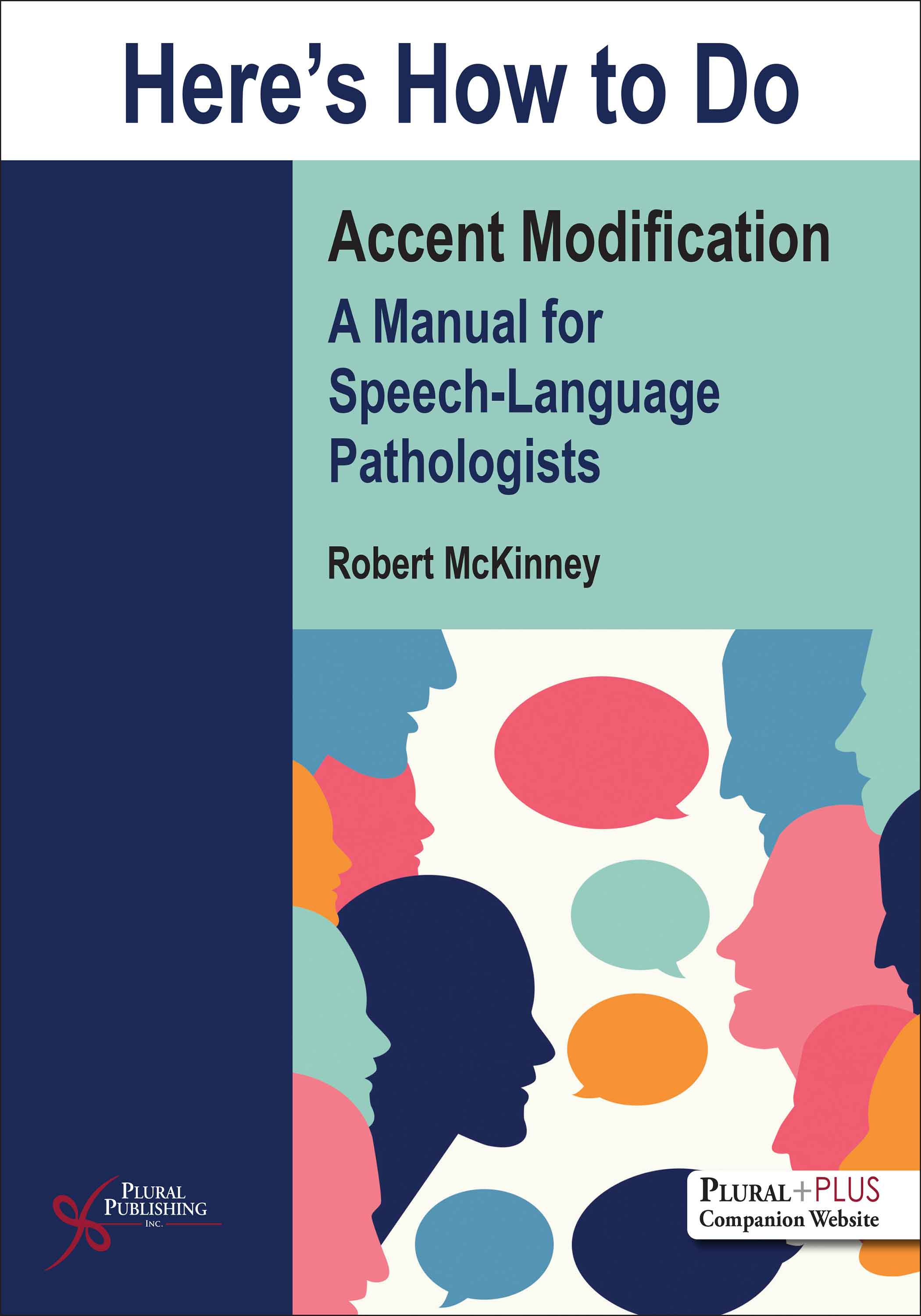
Here's How to Do Accent Modification: A Manual for Speech-Language Pathologists
First Edition
Robert (Bob) McKinney
Details: 306 pages, B&W, Softcover, 8.5" x 11"
ISBN13: 978-1-63550-007-3
© 2019 | Available
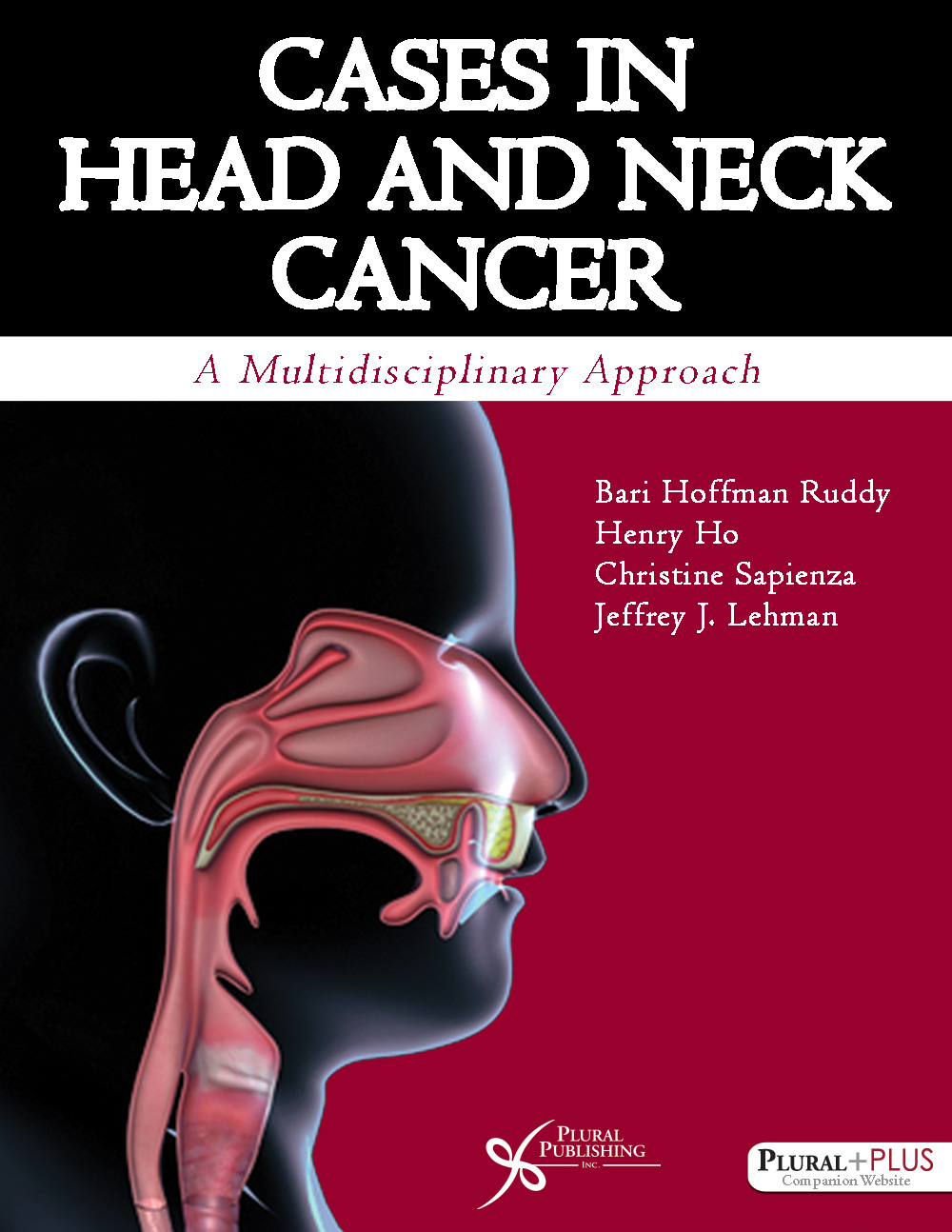
Cases in Head and Neck Cancer: A Multidisciplinary Approach
First Edition
Bari Hoffman, Henry Ho, Christine Sapienza, Jeffrey J. Lehman
Details: 304 pages, Full Color, Hardcover, 8.5" x 11"
ISBN13: 978-1-59756-715-2
© 2016 | Available
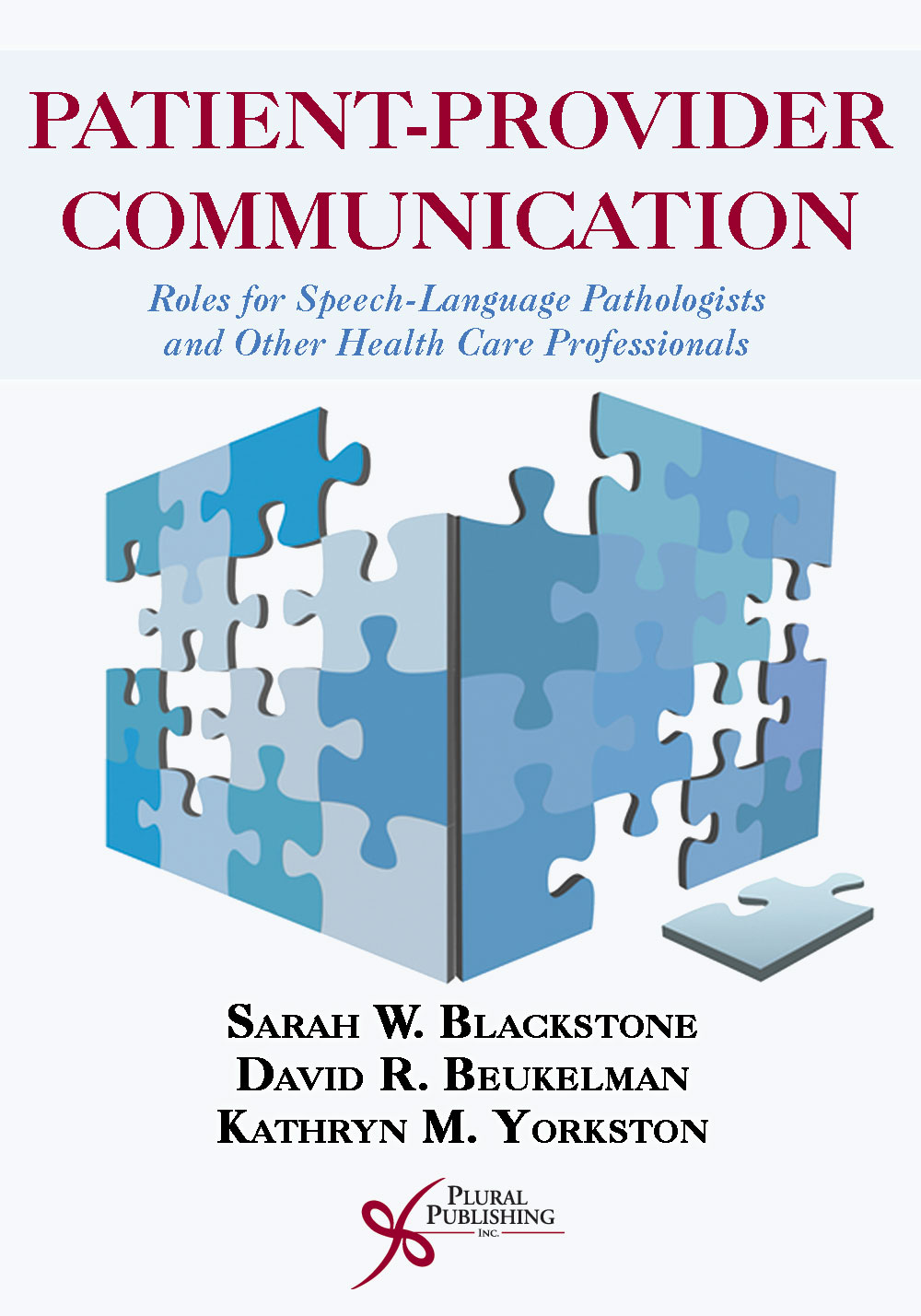
Patient-Provider Communication: Roles for Speech-Language Pathologists and Other Health Care Professionals
First Edition
Sarah W. Blackstone, David R. Beukelman, Kathryn M. Yorkston
Details: 352 pages, B&W, Softcover, 7" x 10"
ISBN13: 978-1-59756-574-5
© 2015 | Available
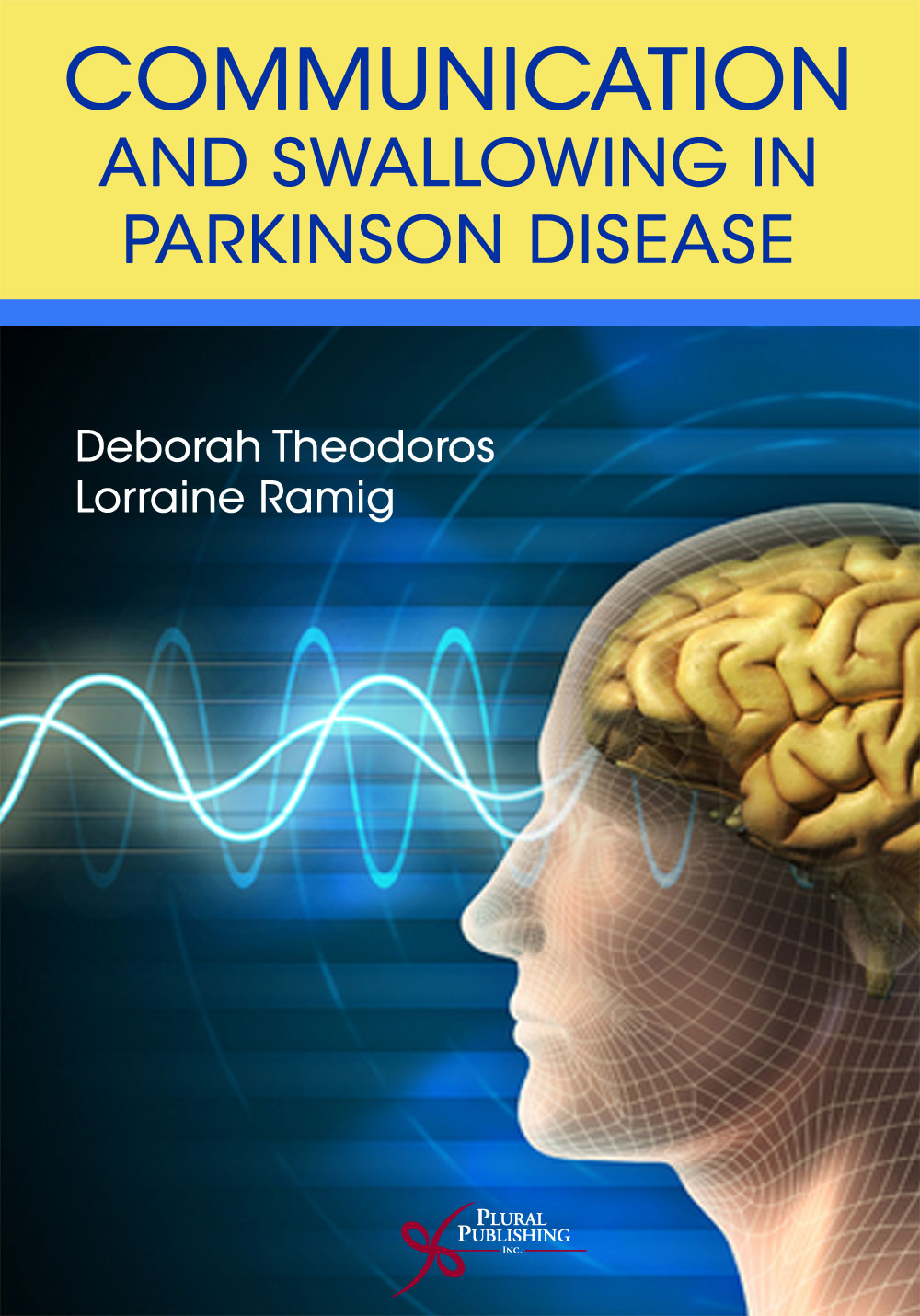
Communication and Swallowing in Parkinson Disease
First Edition
Deborah Theodoros, Lorraine Ramig
Details: 256 pages, B&W, Softcover, 7" x 10"
ISBN13: 978-1-59756-205-8
© 2011 | Available
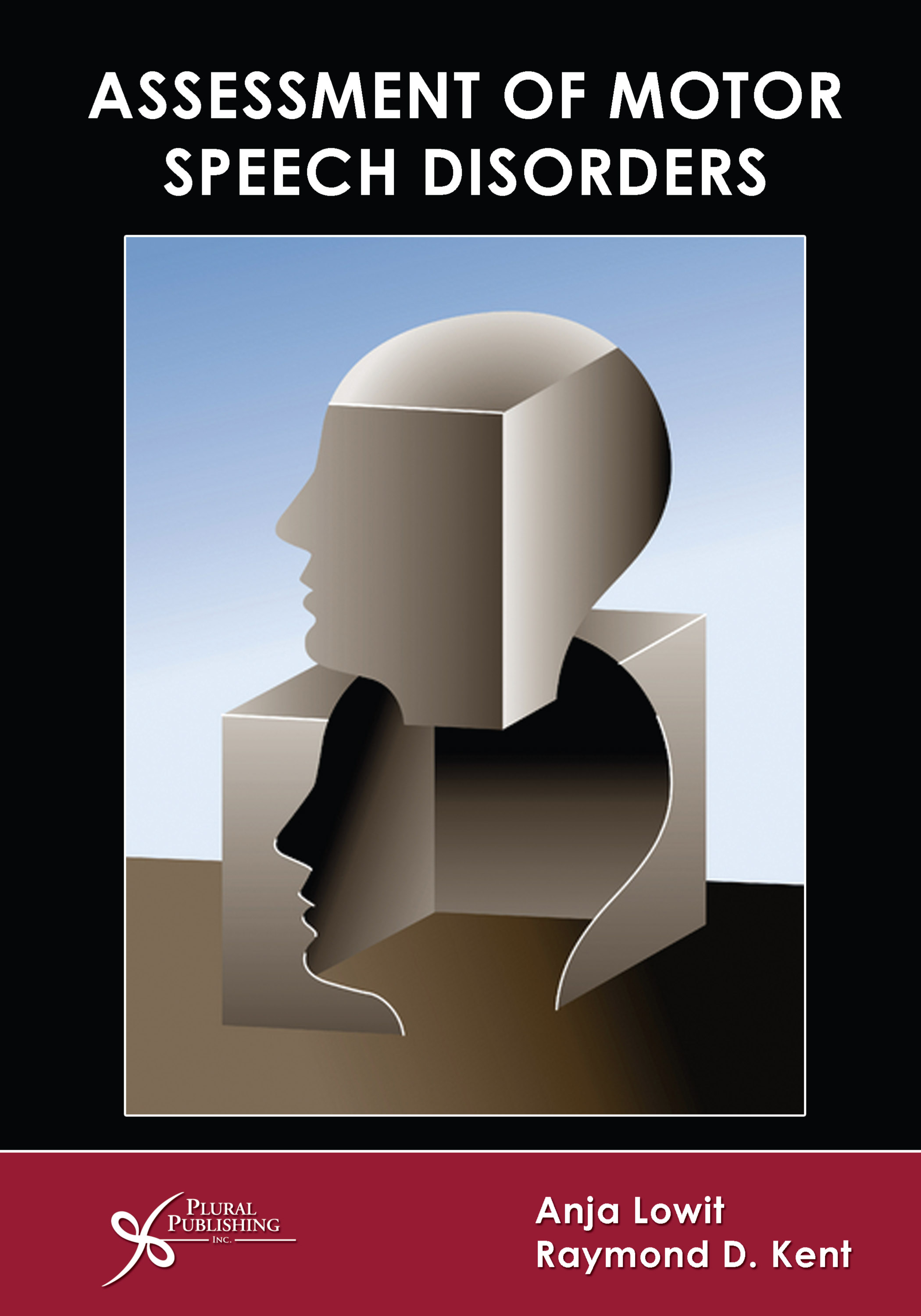
Assessment of Motor Speech Disorders
First Edition
Anja Lowit, Raymond D. Kent
Details: 371 pages, B&W With Color Insert, Softcover, 7" x 10"
ISBN13: 978-1-59756-367-3
© 2011 | Available
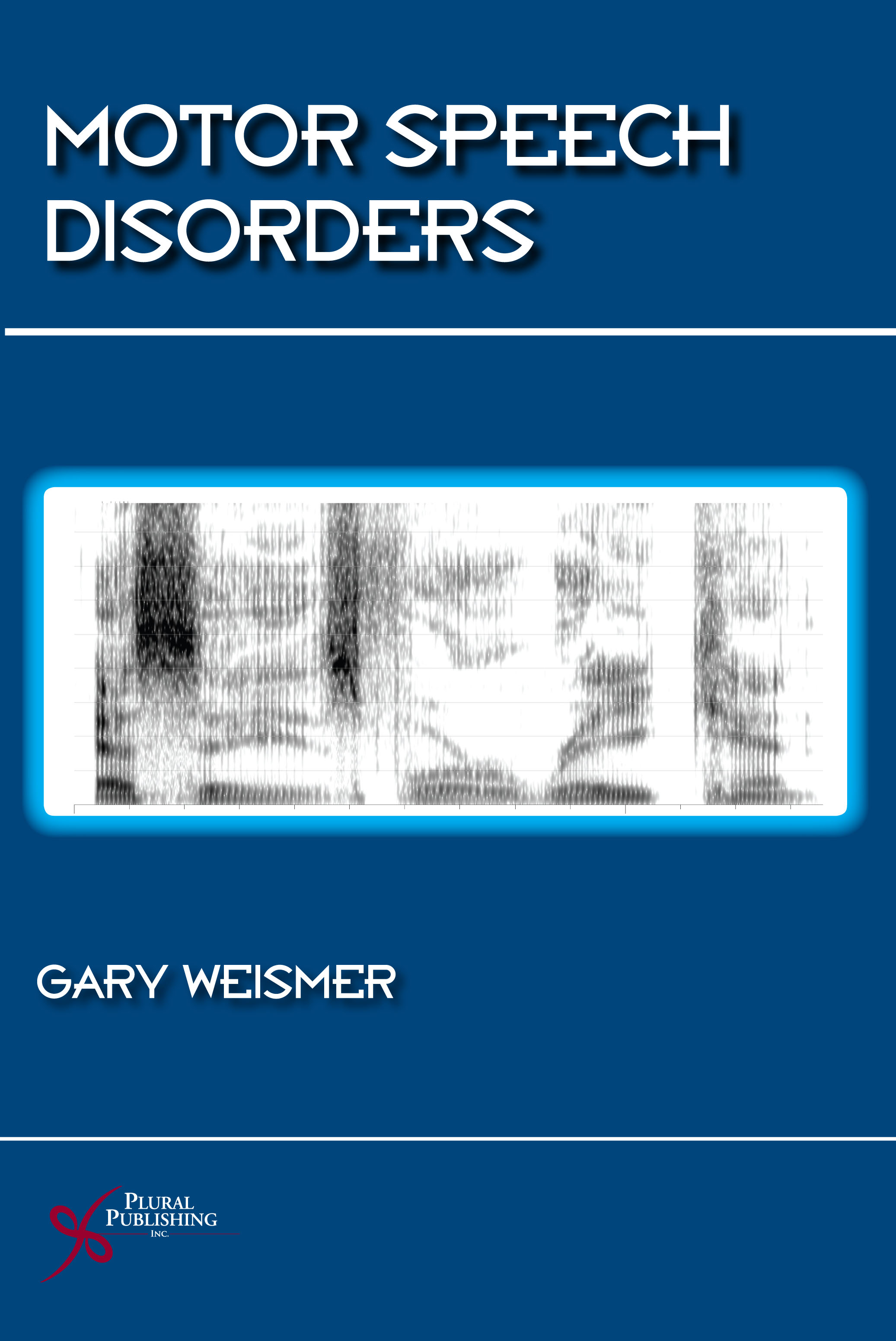
Motor Speech Disorders
First Edition
Gary Weismer
Details: 315 pages, B&W, Hardcover, 7" x 10"
ISBN13: 978-1-59756-115-0
© 2007 | Available
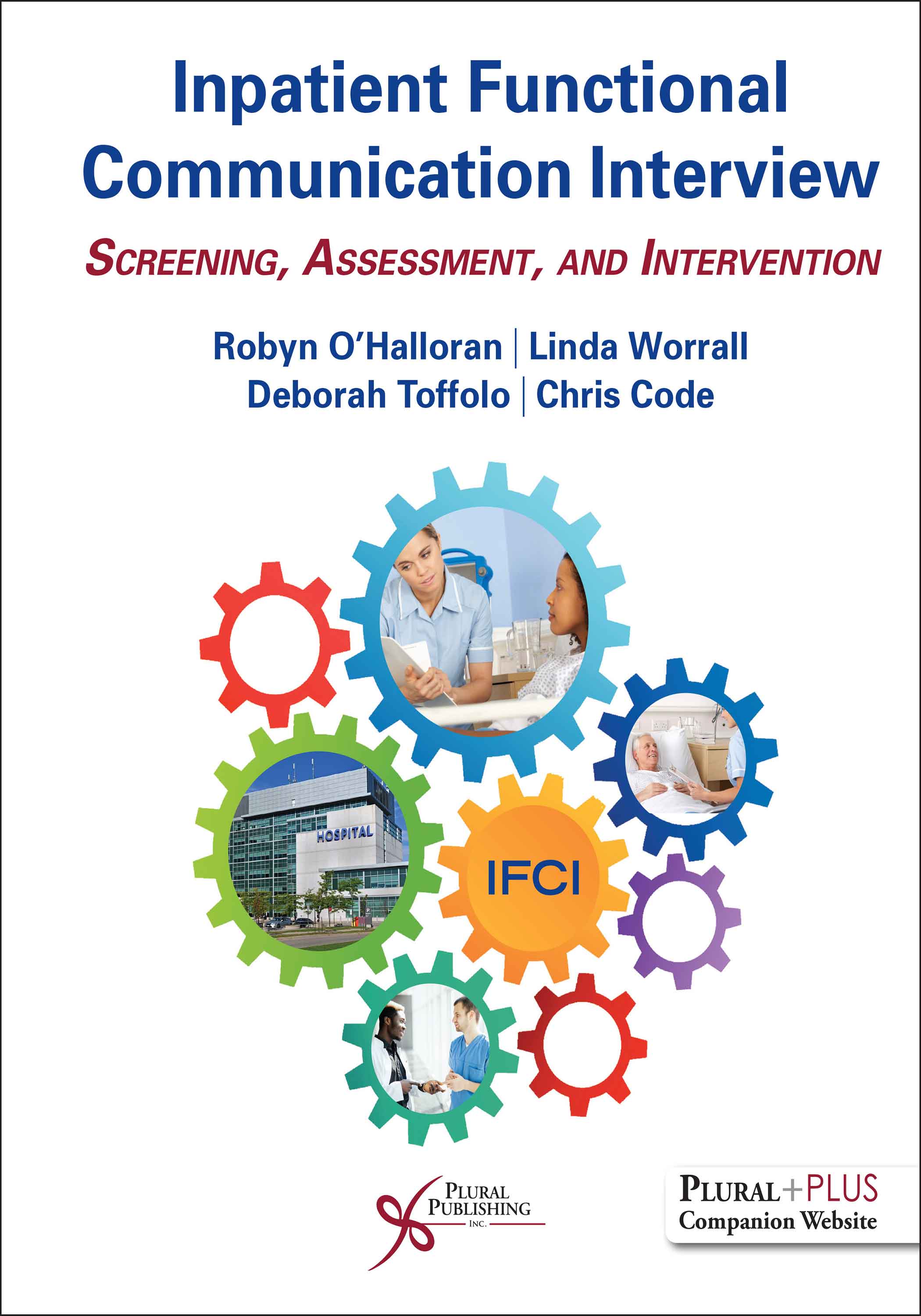
Inpatient Functional Communication Interview: Screening, Assessment, and Intervention
First Edition
Robyn O'Halloran, Linda Worrall, Deborah Toffolo, Chris Code
Details: 170 pages, B&W, Spiral Bound, 8.5" x 11"
ISBN13: 978-1-63550172-8
© 2020 | Available
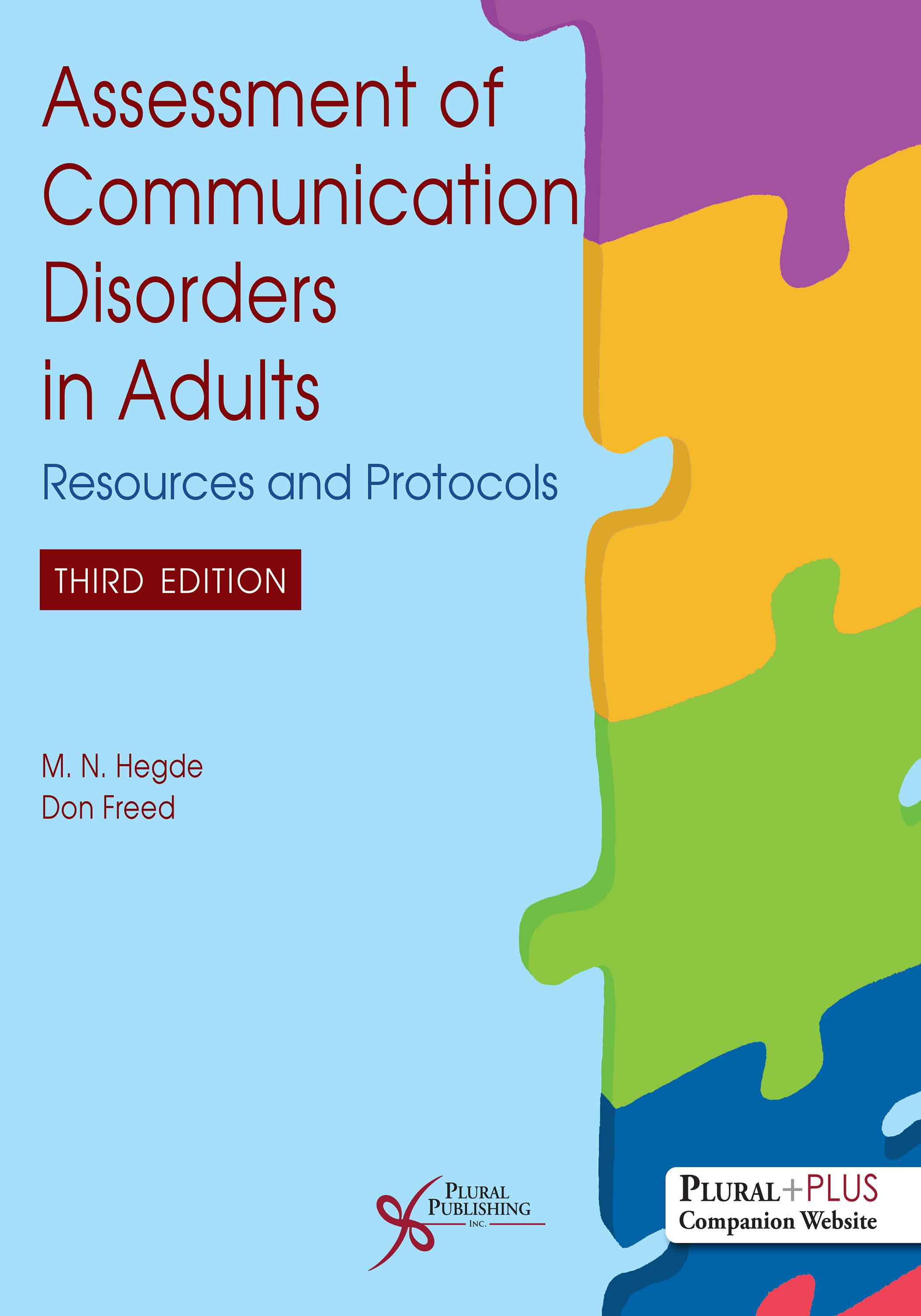
Assessment of Communication Disorders in Adults: Resources and Protocols
Third Edition
M.N. Hegde, Donald B. Freed
Details: 446 pages, B&W, Softcover, 8.5" x 11"
ISBN13: 978-1-63550-263-3
© 2022 | Available
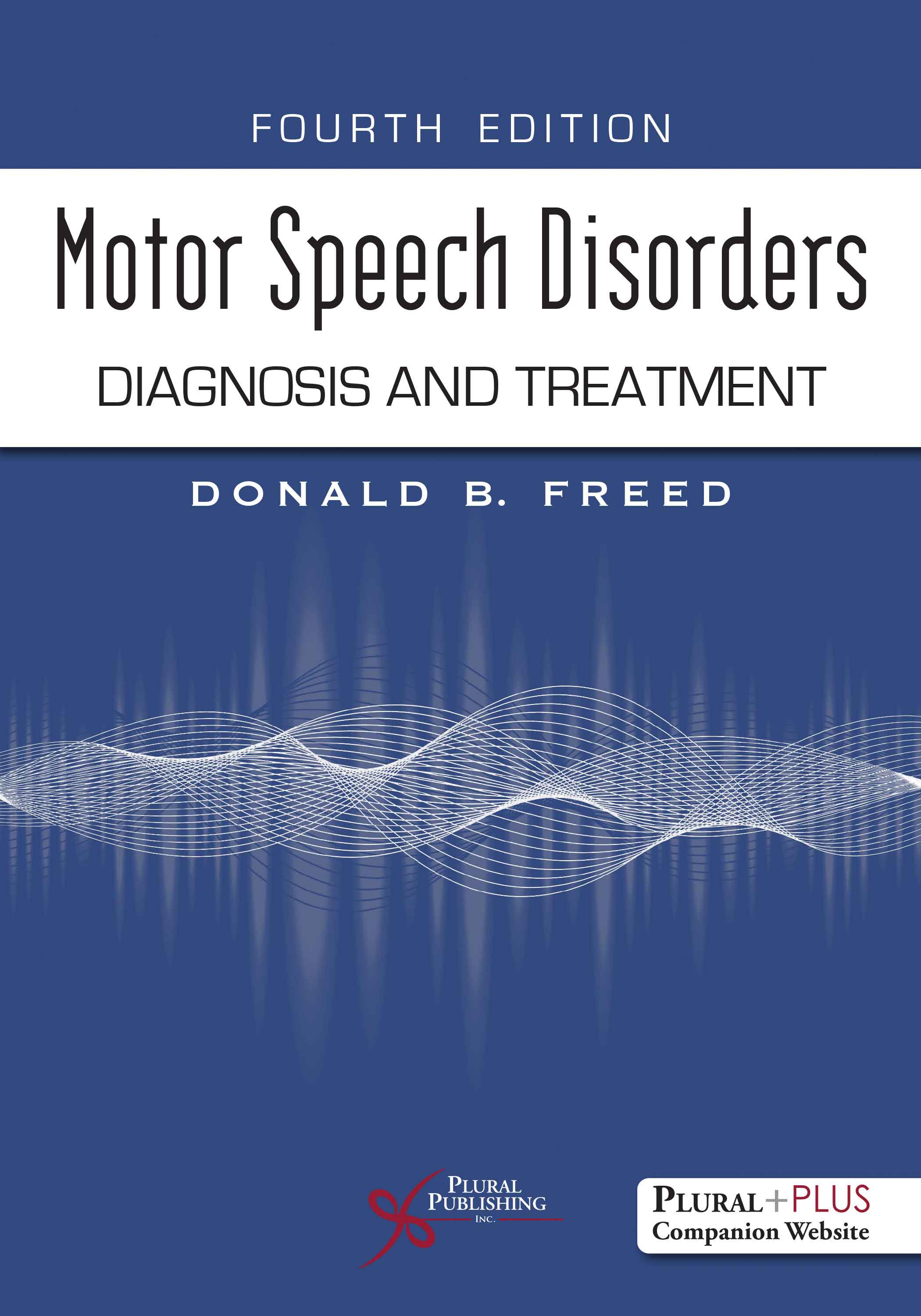
Motor Speech Disorders: Diagnosis and Treatment
Fourth Edition
Donald B. Freed
Details: 381 pages, Full Color, Soft Cover, 7" x 10"
ISBN13: 978-1-63550-607-5
© 2025 | Available

